Kylik immediately inspired confidence. Around thirty years old, trim and fit with a big grin, he managed our closed in aluminium power boat like it was part of him. He was of Inuvialuit descent, and he spoke perfect English. His stories were the best part of the trip. We took off from Inuvik in the early morning with the water still glassy and clear, and headed up the East Channel of the Mackenzie Delta for the town of Tuktoyaktuk on the Beaufort Sea (same latitude as Deadhorse, AK). We spent five hours in the boat, winding our way through the Delta, and then out across the wide mouth of the river to get to Tuk. On the way we climbed a sand moraine, and visited a whaling village, where the locals (his people) go during the summer to hunt Beluga whales. The animals are hunted for subsistence use by a group that has intentionally decided to live as their ancestors did. Only a few whales are killed each year. One beluga keeps an extended family in meat and blubber for a year. We tried eating the blubber and dried whale meat. Not bad, but I wouldn't want that as a large proportion of my diet!
On the way back we flew for an hour over the maze of lakes and waterways that make up this huge delta
. Its the summer resting place for many southern birds such as the sand hill crane and the loon (we saw both).
And again I was reminded of Ellie and her One Person Show: "One sees clearly only with the heart. What is essential is invisible to the eye." So true about the Arctic North. With all this moisture, why don't the trees grow big? In this land of lakes and marshes, how does the soil stay put? In the absence of major tectonic movements, how come we see hills rising out of the flat delta? Why are houses on perfectly flat ground built on stilts ? How do you make the world's cheapest refrigerator?
The answer to all these questions is: PERMAFROST. Hidden from view, twelve to fifteen feet below the earth's surface, this layer of ice controls land use. This underground ice melts (and the land sinks) when the earth's surface is warmed in some way. Global Warming will slowly wreak havoc on the Arctic environment, through this process. But even now, strange things happen. Tree roots get to the ice layer and stop -- ergo, small trees. Houses would warm the earth and sink, unless stilted. Dig a tunnel down to the permafrost, and carve out a cave -- lo and behold you have a permanent refrigerator. Lakes warm the earth. As lake water recedes through evaporation or for other reasons, the permafrost returns, freezing the earth under an ancient lake and causing it to expand upwards. This forms a small hill, known as a Pingo. Whatever people want to do in this region -- building roads, houses or farms, they have to think through how it will affect the unseen frost.
A day on the MacKenzie River
Thursday, August 04, 2016
 Tuktoyaktuk, Northwest Territories, Canada
Tuktoyaktuk, Northwest Territories, Canada
Other Entries
-
9The Icefields Parkway
Jun 0362 days prior Jasper, Canadaphoto_camera13videocam 0comment 4
Jasper, Canadaphoto_camera13videocam 0comment 4 -
10Down the Fraser to Prince George, BC
Jun 0461 days prior Burns Lake, Canadaphoto_camera12videocam 0comment 0
Burns Lake, Canadaphoto_camera12videocam 0comment 0 -
11Into the Cassiar Highway
Jun 0560 days prior Bell II, Canadaphoto_camera9videocam 0comment 5
Bell II, Canadaphoto_camera9videocam 0comment 5 -
12Gateway to the Yukon - Watson Lake
Jun 0659 days prior Watson Lake, Canadaphoto_camera12videocam 0comment 3
Watson Lake, Canadaphoto_camera12videocam 0comment 3 -
13First Day on the ALCAN Highway
Jun 0758 days prior Whitehorse, Canadaphoto_camera15videocam 0comment 13
Whitehorse, Canadaphoto_camera15videocam 0comment 13 -
14Kluane National Park
Jun 0857 days prior Beaver Creek, Canadaphoto_camera25videocam 0comment 12
Beaver Creek, Canadaphoto_camera25videocam 0comment 12 -
15Ha! Ha! Ha! laughed the Wickersham Brothers !
Jun 0956 days prior Fairbanks, United Statesphoto_camera9videocam 0comment 3
Fairbanks, United Statesphoto_camera9videocam 0comment 3 -
16A Day in Fairbanks
Jun 1055 days prior Fairbanks, United Statesphoto_camera12videocam 0comment 4
Fairbanks, United Statesphoto_camera12videocam 0comment 4 -
17On the Haul Road to Coldfoot
Jun 1154 days prior Coldfoot, United Statesphoto_camera20videocam 0comment 5
Coldfoot, United Statesphoto_camera20videocam 0comment 5 -
18Atigun Pass and Beyond
Jun 1253 days prior Deadhorse, United Statesphoto_camera19videocam 0comment 5
Deadhorse, United Statesphoto_camera19videocam 0comment 5 -
19"It doesn't get any better than this"
Jun 1352 days prior Coldfoot, United Statesphoto_camera23videocam 0comment 6
Coldfoot, United Statesphoto_camera23videocam 0comment 6 -
20Return to Fairbanks
Jun 1550 days prior Fairbanks, United Statesphoto_camera8videocam 0comment 3
Fairbanks, United Statesphoto_camera8videocam 0comment 3 -
21Return Home
Jun 2045 days prior Fairbanks, United Statesphoto_camera0videocam 0comment 4
Fairbanks, United Statesphoto_camera0videocam 0comment 4 -
22Back in the saddle again.
Jul 305 days prior Tok, United Statesphoto_camera16videocam 0comment 8
Tok, United Statesphoto_camera16videocam 0comment 8 -
23Over the Top
Jul 314 days prior Dawson City, Canadaphoto_camera14videocam 0comment 10
Dawson City, Canadaphoto_camera14videocam 0comment 10 -
24North on the Dempster Highway
Aug 013 days prior Eagle Plains, Canadaphoto_camera15videocam 0comment 3
Eagle Plains, Canadaphoto_camera15videocam 0comment 3 -
25Tetlit Gwinjik
Aug 022 days prior Inuvik, Canadaphoto_camera20videocam 0comment 6
Inuvik, Canadaphoto_camera20videocam 0comment 6 -
26A day on the MacKenzie River
Aug 04 Tuktoyaktuk, Canadaphoto_camera23videocam 0comment 10
Tuktoyaktuk, Canadaphoto_camera23videocam 0comment 10 -
27Down the Dempster to Dawson
Aug 062 days later Dawson City, Canadaphoto_camera7videocam 0comment 7
Dawson City, Canadaphoto_camera7videocam 0comment 7 -
28Down the Goldrush Trail
Aug 073 days later Whitehorse, Canadaphoto_camera15videocam 0comment 8
Whitehorse, Canadaphoto_camera15videocam 0comment 8 -
29The Alaska Highway Again
Aug 095 days later Fort Nelson, Canadaphoto_camera15videocam 0comment 13
Fort Nelson, Canadaphoto_camera15videocam 0comment 13 -
30Its Summer Again
Aug 106 days later Chetwynd, Canadaphoto_camera13videocam 0comment 10
Chetwynd, Canadaphoto_camera13videocam 0comment 10 -
31R and R in Vancouver
Aug 128 days later Vancouver, Canadaphoto_camera3videocam 0comment 2
Vancouver, Canadaphoto_camera3videocam 0comment 2 -
32Through the Cascades to Okanogan
Aug 139 days later Okanogan, United Statesphoto_camera11videocam 0comment 8
Okanogan, United Statesphoto_camera11videocam 0comment 8 -
33Dam
Aug 1410 days later Thompson Falls, United Statesphoto_camera16videocam 0comment 4
Thompson Falls, United Statesphoto_camera16videocam 0comment 4 -
34East through Montana
Aug 1511 days later Harlowton, United Statesphoto_camera12videocam 0comment 9
Harlowton, United Statesphoto_camera12videocam 0comment 9 -
35Back in the Bakken
Aug 1612 days later Bowman, United Statesphoto_camera6videocam 0comment 12
Bowman, United Statesphoto_camera6videocam 0comment 12 -
36De Visita en Montevideo
Aug 1713 days later Montevideo, United Statesphoto_camera13videocam 0comment 13
Montevideo, United Statesphoto_camera13videocam 0comment 13 -
37Dubuque, Indianapolis and now Morgantown.
Aug 2016 days later Morgantown, United Statesphoto_camera13videocam 0comment 11
Morgantown, United Statesphoto_camera13videocam 0comment 11 -
38Home again
Aug 2117 days later Arlington, United Statesphoto_camera1videocam 0comment 10
Arlington, United Statesphoto_camera1videocam 0comment 10
Comments
2025-05-23
Comment code: Ask author if the code is blank

 Tuktoyaktuk, Northwest Territories, Canada
Tuktoyaktuk, Northwest Territories, Canada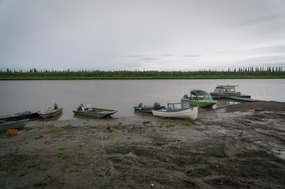


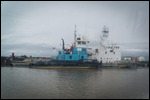
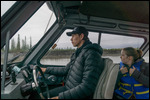
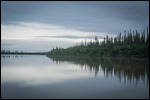
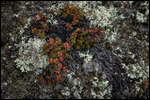

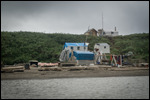
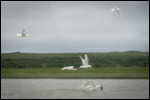
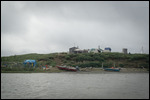
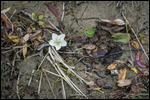


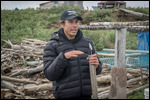
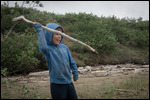

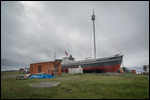
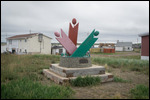
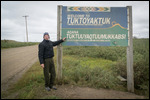
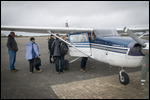


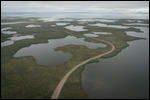
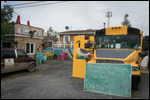
Doug
2016-08-05
Jim, quite fascinating. Is overcast and gray the standard? About how many hours of light each day? Thanks for sharing your adventure with us all.
Megan
2016-08-05
Speaking of permafrost...there's a story out recently about an anthrax outbreak in Siberia that scientists are attributing to a reindeer carcass that was exposed after a heat wave melted layers of the permafrost.
Beth
2016-08-05
Wonderful visit
jim.coates
2016-08-07
Hey Doug, you are right. Overcast and grey is most of the time. They get more than 17 hours of daylight this time of year. Sunrise at 5:45 am. In my experience it doesn't rain in the early morning for a couple of hours. Then the day kicks into gear and does what the weatherman predicted, or something.
From the iPad